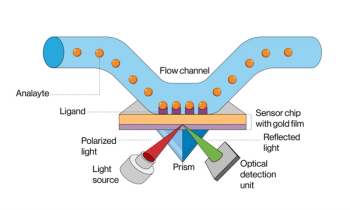
Synthesizing Synthetic Oligonucleotides: An Interview with the CEO of Oligo Factory
LCGC and Spectroscopy Editor Patrick Lavery spoke with Oligo Factory CEO Chris Boggess about the company’s recently attained compliance with Good Manufacturing Practice (GMP) International Conference on Harmonisation of Technical Requirements for Registration of Pharmaceuticals for Human Use (ICH) Expert Working Group (Q7) guidance and its distinction from Research Use Only (RUO) and International Organization for Standardization (ISO) 13485 designations.
Oligonucleotides, or oligos, are short, single- or double-stranded synthetic DNA or RNA molecules, and include antisense oligonucleotides (ASOs), small interfering RNAs (siRNAs), and CRISPR guide RNAs (gRNAs). These chemically synthesized DNA or RNA molecules typically range from 10 to 60 nucleotides in length. They are integral to molecular biology and biotechnology, serving diverse applications such as DNA sequencing, polymerase chain reaction (PCR), and gene expression analysis and therapeutics. Oligonucleotides play a crucial role in emerging fields like gene therapy and RNA interference (RNAi), where they are designed to selectively modulate gene expression, turning genes off or on, whether in vivo or in vitro. Oligonucleotide production requires precise identification, characterization, and measurement of trace impurities using analytical methods like liquid chromatography–mass spectrometry (LC–MS) and high performance liquid chromatography (HPLC). The versatility and specificity requirements for oligonucleotides make them invaluable tools for manipulating, studying, and harnessing genetic information in biomedical research and clinical applications.
Q: To begin, would you explain Oligo Factory's background in DNA and RNA manufacturing and how this work aligns with the field of separation science in emerging interests such as gene editing?
A: Oligo Factory has the sole purpose to generate or synthesize synthetic custom oligonucleotides, both DNA and RNA. Since the inception of the company, we have focused on mid- to large-scale production of the quantity of these synthetic oligos. So, we've been serving a unique set of customers within all the markets for oligonucleotides that range from synthetic biology to molecular diagnostics to therapeutics.
From a GMP and gene editing perspective, there's clearly an inordinate amount of work going on right now within research and clinical trials. In the gene editing and gene engineering space, we're clearly seeing a lot more activity and the need for custom oligos to push some of those therapeutics or molecular diagnostics, whether that's antisense oligos or siRNA or CRISPR guide RNAs. It's a unique time in the life sciences and therapeutics arena.
The core elements of oligo synthesis are clearly synthesizing the molecule and using what most of the industry uses, which is solid-phase phosphoramidite chemistry. That is a unique process that creates a crude product. And then you must go through the purification, getting to a final product, and then you're either lyophilizing into a dry powder or you're sending it off in solution. But that interim step of understanding what you've made and how you purify it appropriately and prepare it to become a final product, there is a ton of analytical science that goes in there within that step. Everything from simple UV-vis spectrometry to HPLC, U(H)PLC, different variations of mass spec, whether that's for molecular weight confirmation or sequence confirmation. At the end of the day, the thing that matters, whether it's an RUO (Research Use Only) or GMP product, is did you make it and you can confirm that you made it? And then the purity specs that are necessary for it to have the function for its unique use case.
Q: I do want to focus on good manufacturing practices. Now, you've said that your team worked tirelessly throughout 2023 to be up to date with compliance. And now that we're in 2024, would you look back at that process and explain its importance?
A: The simplest way to explain the importance is, how do you serve the customer? How can you get to a position to serve all your clients and all the market's needs? Since, before that time, we were working only in the research use only space. We had wonderful customers and great retention there; we wanted to be able to serve as much of the customer needs as possible.
And to do that, you have to enable the next level of quality compliance. And that is into the ISO 13485 and the GMP ICH Q7 realm. We focused on the ICH Q7 designations for compliance, because that's where the human therapeutics needs are. There is clearly a considerable amount of growth in that area.
We believe we have a unique manufacturing [process], both scale and delivery, customer service, turnaround time, and capabilities that allow for us to help move that science along. But simply the importance is: Are you creating a system that is recognized and noticed and can be used in commercial and clinical grade products?
Q: Another thing I noticed was as of last year, you've cut the ribbon on a new facility in Holliston, Mass., USA, and I do want to talk to you about that not only from Oligo Factory’s particular point of view, but getting things to be state-of-the-art and making sure that you maintain that. Every company, I think, that has a hand in this field wants to do that. Talk a little bit about that and how maybe that will be a model elsewhere in the industry.
A: I think the move to the next level of quality compliance is essentially, how can we serve our customers for a longer period of time? How can we make sure that we can serve them differently? The best use case we have is somebody starting a project and they can work with us for a longer time, we can better serve their needs. This is a service model. We are a contract manufacturer. So how do we create systems, whether that's quality systems or a facility that has the capacity to continue to deliver at every stage of the project or scale? And that's what we did. We looked into it at the end of 2021 and we realized we were outgrowing our space. So, we needed to find a much larger facility, one that's to hold more instrumentation, to hold more reagents at one time, to hold more waste, to hold more people.
We were gracious to find a space and build that from scratch here [Metrowest Boston], but we were doing it with this next level of compliance in mind. So how do we create the right workflows and the right quality stations and labs that fit these needs? The capabilities that allow for us to continue to deliver not only the smaller projects in the near-term, late discovery projects or even late R&D projects, but as things move to a commercial and clinical scenario, it's more of a streamlined service directly to the customers.
It's a full company effort for us to: one, understand the right moves from a market perspective, and two, do the tremendous amount of work in order to get the protocols and procedures in place. And [Oligo Factory customers] feel comfortable that we're producing molecules at a quality and a consistency and traceability that gives them comfort to use how they wish.
Q: Is there anything else that you think would be useful information for our audiences with Spectroscopy and LCGC?
A: Oligo synthesis is a beautiful mix of biology and chemistry and engineering, and the analytical chemistry and analytical tools world is in that mix as well. It's really fascinating to see something born from brilliant science. We're able to synthesize something brand new and deploy all of that chemistry and engineering and biology to get something through that's a full-length product that is, whether it's being deployed into gene therapy or being deployed into molecular diagnostics or next-gen sequencing or clinical diagnostics, a team effort from the entire field, whether it's the manufacturers of spectroscopy or spectrometry instrumentation, the reagent providers—it's really a beautiful process when it all comes together and you're creating something brand new and impactful to the scientific community.
So, it's fun to be part of a custom contract manufacturer to see these breakthroughs come to life. But without chromatography and spectroscopy, you'd have a very strong inkling that you made it but getting it to the form and getting it to the final full-length product with the customer's specifications gives it life and allows for it to function as it was intended.
This interview has been lightly edited for length and clarity.
Newsletter
Get essential updates on the latest spectroscopy technologies, regulatory standards, and best practices—subscribe today to Spectroscopy.





